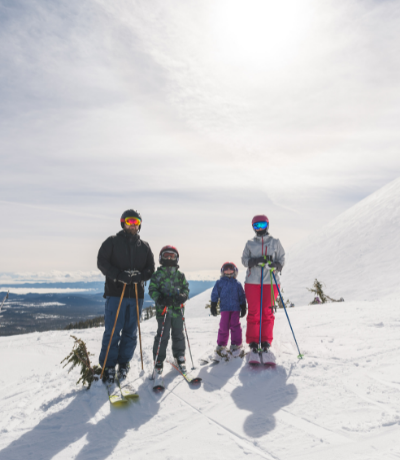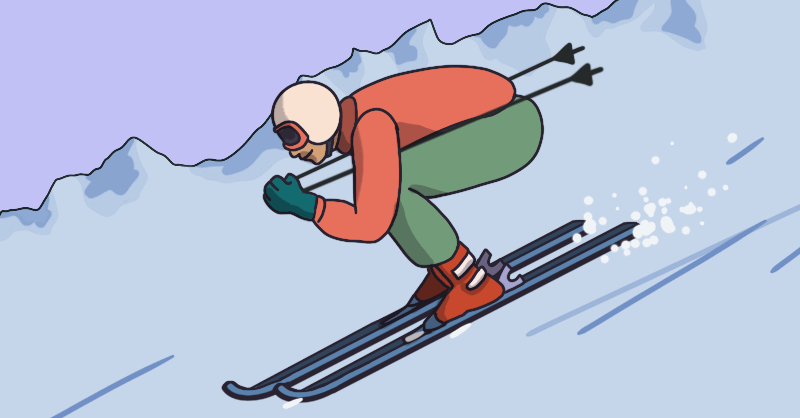Costly Ski Trip Planning Mistakes You Can Avoid
4 February 2022

Smart travelers spend a great deal of time planning their vacations and thinking through the ‘what if’ scenarios. Not to make themselves nutty (although it can sometimes feel like that), but to be prepared.
Of course, the list of potential problems varies by trip, location, activities, and number of people. The most common questions you may ask yourself when planning a ski vacation could be:
- What if someone gets injured on the trip?
- What if the weather is terrible and we’re stuck inside?
- What if flights are canceled and we can’t go (or get home)?
Sure, travel insurance is always part of trip planning, but so is addressing the questions you may not know. Here are the most common mistakes travelers make when planning a ski trip.
1 Picking a busy time
You may be planning to fly in to ski, but the locals probably like to ski too. With so many people doing remote learning and working these days, there is more flexibility for ski breaks. Pick the wrong weekend (school breaks are the worst) and you could be facing crowded lifts, lots of road traffic, and a vanload of grumpy travelers.
Tip: If holidays are the only time you can get away, choose resorts far away from heavily populated metropolitan areas and try to extend your stay into the weekdays.
2 Overestimating abilities
Just because someone skied black diamond runs when they were a kid doesn’t mean they can do it now. One of the biggest mistakes skiers make is overestimating their abilities or misjudging the differences between mountains. Every ski resort is different.
Tip: Look at recent reviews so you know what the runs are really like right now.
The last thing you want to do is get injured early in your trip and have to spend the rest of it watching skiers fly by outside your window.
3 Choosing the wrong mountain
Choosing a ski resort that works for everyone in your group can be tricky. The consequences of choosing a mountain that’s too advanced or too limited for all the people in your group can kill the fun.
If you also need ski lessons for kids or adults, you don’t want the school too far away or everyone won’t have time together.
Tip: Ask about preferences from everyone in your group before you book, and choose a destination that offers a variety of terrain for all levels.
4 Forgetting the altitude
Altitude sickness is a real thing and it can be worse for those who start out from lower elevations. Not only will your crew need to carefully plan how to stay warm and dry (the higher you go, the colder it gets!), they’ll need to know the symptoms of altitude sickness and how to prevent it if you want to avoid an expensive trip to the emergency room.
5 Not having a “Plan B”
It’s great when you can fly into a small regional airport a short distance from the mountain you want to ski. That is, as long as everything goes according to plan.
Small regional airports are convenient, but more prone to having to cancel flights due to weather conditions. If you decide a regional airport is the way to go, have a Plan B just in case winter weather locks it down.
Your Plan B will be as unique as your ski trip, but it may include any (or all) of the following:
- Identifying a larger nearby airport you can safely drive to
- Taking your work with you so you can log in while you wait for the weather to clear
- Having travel insurance that will cover the surprise costs if you get stuck or have to cancel
6 Forgetting to research what’s nearby
If someone in your group can’t downhill ski, for whatever reason (too small, too tired, too sunburned – whatever), you’re gonna want options to keep everyone happy.
Alternative attractions like snow tubing hills, dog sled rides, and even museums can help for those days when one or more travelers just want a day off the mountain.
Other interesting news
Here’s why you should book your plane tickets for summer trips right now, according to travel experts.
Overcoming ASB obstacles while traveling. Here’s a great resource for families traveling with a member dealing with autism spectrum disorder.
The best travel backpack is also a suitcase – see the latest review of the Duchamp Getaway Backpack Suitcase.
Giving up air travel to curb climate change? These three families gave up flying and it’s changed the shape of their relationship to places.
What’s that in the sky? See the latest travel marvels including flying yachts and whale-shaped planes.
New travel routes are coming. Six new international routes are opening up in 2022, see where they’re going. Is one near you?
Damian Tysdal is the founder of CoverTrip, and is a licensed agent for travel insurance (MA 1883287). He believes travel insurance should be easier to understand, and started the first travel insurance blog in 2006.
